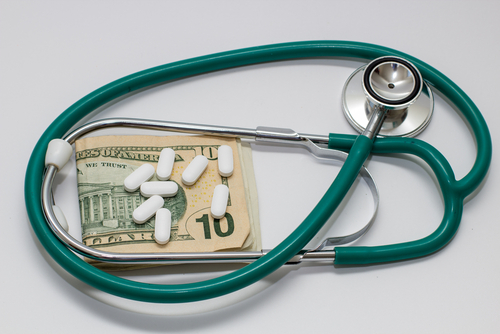Economic Burden of Prophylaxis is Surpassed by Long-Term Benefits for Hemophilia B Patients, Analysis Shows

Researchers have found that the high price of recombinant clotting factors for patients with hemophilia B is the main cause of the economic burden of the disease in the United States.
However, despite the cost, prophylaxis treatment can provide clinical benefits to patients that may reduce other costs not associated directly to factor replacement therapy.
These findings were reported in an article titled “Economic Burden of Illness among Persons with Hemophilia B from HUGS Vb: Examining the Association of Severity and Treatment Regimens with Costs and Annual Bleed Rates.” It was published at Value in Health, the journal of the International Society for Pharmacoeconomics and Outcomes Research.
Hemophilia B is a rare genetic blood disorder that affects about 4,400 people in the U.S. Although there is no cure for this illness, the use of blood clotting factor replacement therapies can help prevent and stop bleeding episodes, as well as improve secondary symptoms such as pain and joint mobility, and patients’ overall quality of life.
Despite the benefits of this therapeutic strategy, about 5 percent of patients develop antibodies against the artificial clotting factor and stop responding to the treatment. Therefore additional bypass agents and higher doses of the therapy are required to effectively inhibit bleeding episodes.
The Hemophilia Utilization Group Studies Part Vb (HUGSVb) conducted a study to evaluate the annual bleed rate and associated costs among hemophilia B population. They collected clinical and demographic information from 148 patients treated between 2009 and 2014 in 10 hemophilia treatment centers in the U.S.
They found that a patient spends on average a total of $85,852 per year to treat mild-to-moderate hemophilia B, and $198,733 in severe cases. Administration of clotting factors accounted for 85 percent of the cost associated with this disease, while other indirect costs such as lost wages and unemployment accounted for just 9 percent of total costs.
Prophylactic treatment was found to be associated with 2.5 times higher clotting factor cost than episodic treatment regimen. Also prophylaxis was found to require additional visits to clinical centers, and support from clinical teams and caregivers. However, patients receiving prophylaxis experienced fewer bleeding episodes per year and lower hospitalizations costs than those undergoing episodic treatment.
“Hemophilia B is associated with high total costs and surprisingly high ABR [annual bleeding rate] in routine clinical practice in the United States,” the authors reported.
Although prophylactic treatment may require more visits to hemophilia treatment centers and work absenteeism, there is evidence of lower hospitalization costs, more full-time employment, and lower ABR suggesting prophylaxis’ potential long-term benefits over episodic treatment for hemophilia B patients, they concluded.






